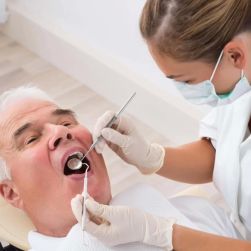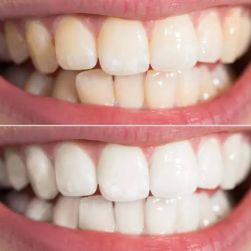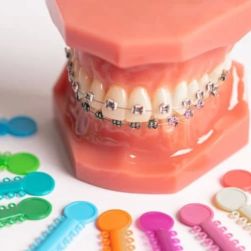Dental Braces for Kids: When is the Right Time to Start?
As a parent, one of the questions I often hear from other parents is, "When is the best time for my child to get dental braces?" It’s a topic filled with uncertainty, and understandably so. The idea of braces can seem intimidating for both kids and parents, but it’s an essential part of modern dental care for many children. In this article, I will share my personal insights into the world of children's orthodontics, how to determine the right time for braces, and what parents should expect throughout the process.
Understanding the Importance of Early Orthodontic Care
Before we dive into when to start thinking about braces, it’s crucial to understand why early orthodontic care matters. Braces are not just about straightening teeth; they are about ensuring proper jaw alignment, preventing future dental problems, and improving a child's overall dental health. I remember when my own child, Emily, first visited the orthodontist. The orthodontist pointed out some potential issues with her bite that might have gone unnoticed for years. Early intervention can prevent more severe dental issues later on.
When Should Your Child Get Braces?
One of the most common misconceptions is that kids should only get braces when all their adult teeth have come in. However, this isn't necessarily the case. The American Association of Orthodontists recommends that children visit an orthodontist by the age of 7. This doesn't mean that your child will immediately need braces, but it allows the orthodontist to assess the development of their teeth and jaw early on.
At this stage, orthodontists can identify problems such as misalignment, overcrowding, or bite issues that might need attention as your child grows. In Emily's case, she was assessed at 8 years old, and we were able to address some issues early before they became more complicated. It was a huge relief to know that we were staying ahead of the curve.
Signs That Your Child May Need Braces
While every child develops differently, there are some common signs that may indicate it’s time to consider braces. These signs include:
- Overbite or Underbite: If your child’s upper teeth significantly overlap the lower teeth (overbite) or vice versa (underbite), braces can help correct the alignment.
- Spacing Issues: Gaps between your child’s teeth or overcrowding can be a sign that braces are necessary to align their teeth properly.
- Difficulty Chewing or Biting: If your child has trouble biting or chewing food properly, it might be due to an issue with how their teeth align.
- Teeth Grinding: Constant grinding can be a sign of an improper bite that might require braces to address.
If your child exhibits any of these signs, it’s worth scheduling a consultation with an orthodontist. It’s never too early to start thinking about their long-term dental health!
The Process of Getting Braces
Once the decision is made to pursue braces, the process itself can seem a bit overwhelming for both parents and kids. But with the right information, you’ll feel prepared every step of the way. Let me walk you through what you can expect:
- Initial Consultation: The first step involves a thorough examination by an orthodontist. They will take X-rays, photographs, and possibly impressions of your child’s teeth to get a clear picture of their oral health.
- Treatment Plan: The orthodontist will develop a personalized treatment plan based on your child’s needs. This will include the type of braces best suited for them—traditional metal braces, ceramic braces, or even clear aligners in some cases.
- Fitting the Braces: The process of getting the braces put on usually takes one to two hours. It’s not painful, but it can be a little uncomfortable. During this appointment, brackets are placed on the teeth, and wires are attached.
- Adjustments and Monitoring: Your child will need to return to the orthodontist regularly (every 4-6 weeks) for adjustments. This is when the orthodontist tightens the wires or makes other adjustments to ensure the teeth are shifting as planned.
- Retainers: Once the braces are removed, your child will likely need to wear a retainer to maintain the new position of their teeth. This is a crucial part of the process to ensure that their teeth stay in the correct position.
How to Make the Braces Experience Easier for Your Child
While braces are a fantastic solution to dental issues, they do come with some challenges. The good news is, there are plenty of ways to make the experience more comfortable and even fun for your child. Here are a few tips that worked for us:
- Focus on Food: Right after getting braces, certain foods may be off-limits (like sticky or hard foods). Keep soft, braces-friendly snacks on hand, such as yogurt, smoothies, and pasta.
- Embrace the Change: Encourage your child to see braces as a positive change that will improve their smile. Some kids even love the idea of customizing their braces with colored bands!
- Manage Discomfort: Braces can cause discomfort, especially after adjustments. Over-the-counter pain relief and orthodontic wax can help soothe any irritation caused by the braces.
- Keep Up with Oral Hygiene: Brushing and flossing with braces can be a bit more challenging, but it's crucial. Help your child maintain a consistent oral care routine to avoid cavities and gum issues.
With these simple steps, your child will be well on their way to a healthier, straighter smile!
Braces Aren’t Just for Teens
Although many people associate braces with teenagers, it’s essential to note that kids as young as 7 can benefit from orthodontic treatment. Early intervention can prevent more severe issues from developing, leading to a smoother, faster treatment process later on. And, as I’ve learned firsthand, starting early often results in better long-term outcomes for your child’s dental health.
So, if you're wondering when your child should start thinking about braces, the answer is simple: the sooner, the better. The right time to start will depend on your child’s individual needs, but working with an orthodontist to assess their development is always a great first step.
Remember, getting braces is a journey, and while it may seem daunting at first, it’s a small price to pay for a lifetime of confident smiles!






